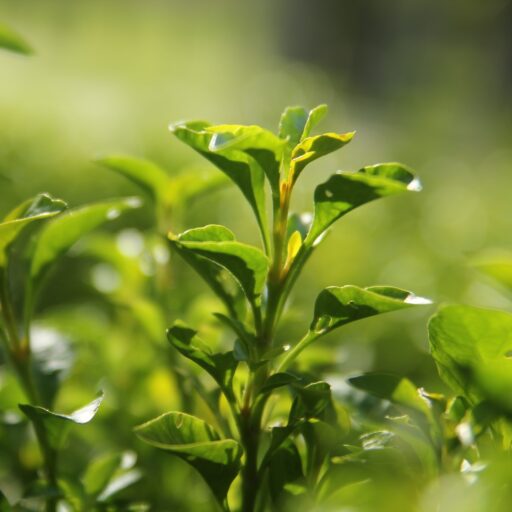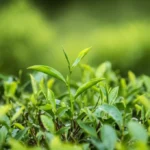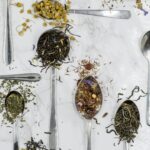Support our educational content for free when you purchase through links on our site. Learn more
Seasonal Care Tips for Tea Plants: 12 Expert Hacks to Thrive 🌿 (2025)
Did you know that the humble tea plant, Camellia sinensis, changes its needs dramatically with each season? From the first spring pruning that sparks new growth to the cozy winter dormancy that conserves energy, mastering seasonal care is the secret to cultivating lush, flavorful tea leaves right in your own garden or home. At Growing Teas™, we’ve spent years nurturing these leafy wonders through every twist and turn of the calendar—and we’re excited to share our top 12 seasonal care tips that will keep your tea plants thriving year-round.
Imagine plucking your own fresh tea leaves in summer, bursting with bold flavor, or knowing exactly how to protect your plants from frost without guesswork. Curious about the best watering routines or how to fend off pesky tea mosquito bugs? Stick around as we unravel the seasonal rhythms of tea growing, packed with practical advice, insider anecdotes, and expert tricks that will turn your tea garden into a flourishing oasis.
Key Takeaways
- Seasonal adjustments are crucial: Tailor watering, fertilizing, pruning, and pest control to each season for optimal growth.
- Spring pruning and fertilization set the stage for abundant, healthy leaves.
- Summer care focuses on hydration and shade to prevent heat stress and maximize flavor.
- Autumn prepares plants for dormancy by tapering nutrients and protecting roots.
- Winter dormancy requires minimal watering and frost protection to ensure survival.
- Pest vigilance year-round keeps your tea plants healthy and productive.
- Harvest timing influences tea flavor profiles, so knowing when and how to pluck is key.
Ready to become a seasonal tea care pro? Let’s dive in!
Table of Contents
- ⚡️ Quick Tips and Facts
- 🌿 The Journey of Your Tea Plant: A Brief History & Background
- 🌸 Spring Awakening: Nurturing Your Tea Plants for Peak Performance
- ☀️ Summer Sizzle: Keeping Your Tea Plants Thriving in the Heat
- 🍂 Autumn’s Embrace: Preparing Your Tea Plants for Winter’s Rest
- ❄️ Winter Wonderland: Ensuring Resilience During Dormancy
- 🌱 Soil Secrets & Nutrient Nudges: The Foundation of Flavorful Tea
- 💧 Watering Wisdom: Quenching Your Tea Plant’s Thirst, Season by Season
- 🐛 Pest & Disease Management: Keeping Unwanted Guests Away from Your Tea Garden
- 🍵 Harvesting Your Own Tea: From Bush to Brew, A Grower’s Guide
- ❌ Common Mistakes to Avoid: Learning from Our (and Your) Tea Growing Experiences
- 🏡 Tea Plant Varieties: Choosing the Right Camellia Sinensis for Your Home & Climate
- 🛠️ Tools & Equipment: Essential Gear for the Aspiring Tea Grower
- Conclusion
- Recommended Links
- FAQ
- Reference Links
⚡️ Quick Tips and Facts
Welcome to the ultimate guide on seasonal care tips for tea plants! Whether you’re a budding tea grower or a seasoned leaf lover, we at Growing Teas™ are here to spill the tea on how to keep your Camellia sinensis thriving year-round. 🌱
Here are some quick facts to get you started:
- ✅ Tea plants prefer acidic, well-draining soil with a pH between 5.0 and 6.5.
- ✅ They thrive in partial shade to full sun, but too much direct sun can scorch leaves.
- ✅ Watering needs vary by season: more frequent in summer, less in winter.
- ✅ Pruning is essential in spring to encourage new growth and maintain shape.
- ✅ Pest threats include tea mosquito bugs, aphids, and fungal diseases—early detection is key.
- ✅ Tea plants enter a dormant phase in winter, requiring less water and no fertilization.
- ✅ Harvest timing influences flavor: early spring harvests yield delicate teas, while summer plucks produce bolder flavors.
Curious about how to tailor your care routine as the seasons change? Stick with us—we’ll walk you through every step, from spring’s first pruning to winter’s cozy dormancy. Plus, we’ll share insider tips from our own tea gardens and link you to the best resources for growing your own tea at home. 🌿
For a deep dive into tea cultivation basics, check out our Growing Teas™ overview.
🌿 The Journey of Your Tea Plant: A Brief History & Background
Before we get our hands dirty, let’s sip on some history. The tea plant, Camellia sinensis, has been cultivated for over 5,000 years, originating in the misty mountains of China. From ancient Chinese emperors to British afternoon teas, this humble shrub has traveled the world and captured hearts everywhere.
Origins and Cultivation
- Native to East Asia, tea plants thrive in subtropical to tropical climates.
- The two main varieties are Camellia sinensis var. sinensis (Chinese tea) and Camellia sinensis var. assamica (Assam tea).
- Tea cultivation spread to India, Sri Lanka, Japan, and beyond, adapting to diverse climates and soils.
Why Seasonal Care Matters
Tea plants are perennial evergreens, but their growth cycles are deeply influenced by seasonal changes. Understanding these cycles helps you:
- Maximize leaf quality and yield.
- Prevent stress and disease.
- Optimize harvest timing for flavor profiles.
Our team at Growing Teas™ has spent years observing how seasonal shifts affect tea plant physiology, and we’ll share those insights with you throughout this guide.
🌸 Spring Awakening: Nurturing Your Tea Plants for Peak Performance
Spring is the season of rebirth—and your tea plants are no exception! After winter’s dormancy, they burst into fresh growth, eager to soak up nutrients and sunlight.
1. Spring Pruning Perfection: Shaping Your Tea Bush for Abundance
Pruning is like giving your tea plant a fresh haircut—removing old, woody branches encourages new shoots, which produce the tender leaves prized for tea.
How to prune in spring:
- Use clean, sharp shears to cut back about one-third of the previous year’s growth.
- Focus on removing dead or weak branches.
- Shape the bush to allow air circulation and sunlight penetration.
- Avoid heavy pruning if the plant is young (less than 2 years old).
Our tea growers swear by this step: “After pruning, our bushes look happier and yield more flavorful leaves,” says Jasmine, one of our lead cultivators.
2. Fertilization Finesse: Fueling Spring Growth
Spring is when your tea plants need a nutrient boost to fuel vigorous growth.
- Use a balanced fertilizer rich in nitrogen (N), phosphorus (P), and potassium (K), such as a 10-10-10 or 12-6-6 formula.
- Organic options like composted manure or fish emulsion work wonders for soil health.
- Apply fertilizer in early spring and again mid-season, following package instructions carefully to avoid overfeeding.
3. Pest Patrol & Disease Defense: Early Detection is Key
Spring warmth can also bring unwelcome guests.
- Watch for tea mosquito bugs (Helopeltis theivora), which cause leaf damage.
- Aphids and spider mites may appear; introduce beneficial insects like ladybugs or use neem oil sprays.
- Fungal diseases such as blister blight thrive in humid conditions—ensure good airflow and avoid overhead watering.
Pro tip: Inspect your plants weekly during spring to catch problems early.
☀️ Summer Sizzle: Keeping Your Tea Plants Thriving in the Heat
Summer is when tea plants show their true colors—literally! The leaves develop rich flavors, but heat and sun can be challenging.
4. Watering Wisdom: Hydration Hacks for Hot Days
Tea plants love moisture but hate soggy roots.
- Water deeply and consistently, aiming for moist but well-drained soil.
- Early morning watering reduces evaporation and fungal risk.
- Mulching with organic materials like straw or pine needles helps retain soil moisture and regulate temperature.
5. Sun Exposure & Shade Solutions: Finding the Sweet Spot
While tea plants enjoy sunlight, too much direct sun can scorch leaves and reduce quality.
- Provide partial shade during peak afternoon hours, especially in hotter climates.
- Use shade cloths or plant companion trees like nitrogen-fixing Albizia to create dappled light.
- Monitor leaf color—pale or scorched leaves signal too much sun.
6. The Art of the Summer Harvest: Plucking for Peak Flavor
Summer harvests yield bold, robust flavors perfect for black and oolong teas.
- Pluck the top two leaves and a bud for best quality.
- Harvest early in the morning when leaves are freshest.
- Avoid over-harvesting to allow plants to recover.
Our growers often say summer is “plucking paradise” but caution: “Don’t get carried away—sustainable harvesting keeps the bushes healthy for years.”
🍂 Autumn’s Embrace: Preparing Your Tea Plants for Winter’s Rest
As the days shorten and temperatures drop, it’s time to help your tea plants wind down.
7. Tapering Off Fertilization: Signaling Dormancy
- Gradually reduce fertilizer applications starting in late summer.
- Switch to a low-nitrogen formula or stop feeding altogether by mid-autumn.
- This signals plants to slow growth and prepare for dormancy.
8. Winterizing Outdoor Tea Plants: A Cozy Prep
If your tea plants are outdoors in cooler zones:
- Apply a thick layer of mulch around the base to insulate roots.
- Protect plants with frost cloths or burlap wraps during cold snaps.
- Avoid heavy pruning now; wait until spring.
9. Indoor Transition Tactics: Bringing Your Tea Babies Inside
For potted tea plants in colder climates:
- Move pots indoors before the first frost.
- Place near bright windows but away from drafts and heating vents.
- Reduce watering to prevent root rot during dormancy.
❄️ Winter Wonderland: Ensuring Resilience During Dormancy
Winter is the tea plant’s time to rest and recharge. Your role? Keep them cozy and stress-free.
10. Dormancy Management: The Art of Letting Go (for a Bit!)
- Expect minimal growth and leaf drop.
- Avoid fertilization and heavy watering.
- Monitor for pests indoors, especially spider mites.
11. Frost Protection Protocols: Shielding Your Precious Leaves
- Outdoor plants benefit from frost cloths and windbreaks.
- Consider portable greenhouses or cold frames for extra protection.
- Avoid watering late in the day to reduce frost damage risk.
12. Indoor Tea Plant TLC: Keeping Them Happy Until Spring
- Maintain humidity with pebble trays or humidifiers.
- Use grow lights if natural light is insufficient.
- Keep temperatures steady between 55-70°F (13-21°C).
🌱 Soil Secrets & Nutrient Nudges: The Foundation of Flavorful Tea
Healthy soil is the secret sauce behind every great cup of tea.
| Soil Aspect | Ideal Condition | Why It Matters |
|---|---|---|
| pH | 5.0 to 6.5 (acidic) | Nutrient availability |
| Texture | Loamy, well-draining | Prevents root rot |
| Organic Matter | High (compost, mulch) | Supports beneficial microbes |
| Drainage | Excellent | Avoids waterlogging |
Tips for soil care:
- Test your soil annually with kits from brands like Luster Leaf or Rapitest.
- Amend with organic compost and pine needles to maintain acidity.
- Rotate mulches seasonally to replenish nutrients.
For more on organic practices, visit our Organic Farming Techniques section.
💧 Watering Wisdom: Quenching Your Tea Plant’s Thirst, Season by Season
Watering is an art form with tea plants—too much or too little spells trouble.
| Season | Watering Frequency | Key Tips |
|---|---|---|
| Spring | Moderate, as growth resumes | Water early morning, avoid soggy soil |
| Summer | Frequent, deep watering | Mulch to retain moisture |
| Autumn | Gradually reduce | Water less as plant slows growth |
| Winter | Minimal, just to keep moist | Avoid overwatering indoors |
Our experience: Using drip irrigation systems like Rain Bird models has saved us water and kept roots happy.
🐛 Pest & Disease Management: Keeping Unwanted Guests Away from Your Tea Garden
Tea plants face a host of pests and diseases, but vigilance and natural remedies keep them in check.
Common Pests
- Tea mosquito bug (Helopeltis theivora): Causes black spots and leaf curling.
- Aphids: Sap-sucking insects that weaken plants.
- Spider mites: Tiny arachnids causing stippling and leaf drop.
Disease Threats
- Blister blight (Exobasidium vexans): Fungal disease causing blister-like lesions.
- Root rot: Caused by overwatering and poor drainage.
Management Strategies
- Introduce beneficial insects like ladybugs and lacewings.
- Use organic sprays such as neem oil or insecticidal soap.
- Maintain good airflow and avoid overhead watering.
- Remove infected leaves promptly.
For detailed pest control guides, visit our Green Tea Cultivation resources.
🍵 Harvesting Your Own Tea: From Bush to Brew, A Grower’s Guide
Harvesting is where the magic happens—your care culminates in those precious leaves that become your perfect cup.
When to Harvest
- Spring: First flush, delicate and aromatic.
- Summer: Stronger, more robust flavors.
- Autumn: Final harvest before dormancy.
How to Harvest
- Pick the top two leaves and a bud—this combo yields the best flavor.
- Use sharp scissors or pluck gently by hand.
- Harvest early in the day before the sun hits the leaves.
Post-Harvest Processing
- Wither leaves to reduce moisture.
- Roll or bruise to initiate oxidation (for black or oolong teas).
- Dry thoroughly to preserve flavor.
Our growers recommend starting with small batches to experiment with flavor profiles. For DIY blending tips, check out our DIY Tea Blending articles.
❌ Common Mistakes to Avoid: Learning from Our (and Your) Tea Growing Experiences
Even seasoned growers slip up! Here are frequent pitfalls and how to dodge them:
| Mistake | Why It’s a Problem | How to Avoid |
|---|---|---|
| Overwatering | Root rot and fungal diseases | Check soil moisture before watering |
| Ignoring pruning | Reduced yield and poor shape | Prune annually in spring |
| Excessive fertilizer | Leaf burn and nutrient imbalance | Follow recommended rates |
| Too much direct sun | Leaf scorch and stress | Provide shade during hottest hours |
| Neglecting pest control | Infestations and damage | Regular inspections and organic treatments |
Our founder, Mei, recalls: “I once lost half my crop to root rot because I ignored drainage. Lesson learned the hard way!”
🏡 Tea Plant Varieties: Choosing the Right Camellia Sinensis for Your Home & Climate
Not all tea plants are created equal! Selecting the right variety can make or break your growing success.
| Variety | Climate Preference | Flavor Profile | Best Uses |
|---|---|---|---|
| Camellia sinensis var. sinensis | Cooler, subtropical climates | Delicate, floral notes | Green and white teas |
| Camellia sinensis var. assamica | Warmer, tropical climates | Bold, malty flavors | Black and pu-erh teas |
| Camellia sinensis var. cambodiensis | Tropical, humid regions | Robust and earthy | Specialty blends |
We recommend sourcing plants from reputable nurseries like Logee’s Plants or Fast Growing Trees to ensure healthy stock.
🛠️ Tools & Equipment: Essential Gear for the Aspiring Tea Grower
Growing tea is a rewarding hobby, but having the right tools makes it easier and more enjoyable.
| Tool | Purpose | Recommended Brands/Models |
|---|---|---|
| Pruning shears | Shaping and harvesting | Fiskars PowerGear |
| Soil pH tester | Monitoring soil acidity | Luster Leaf Rapitest |
| Mulch and compost | Soil health and moisture retention | Local organic suppliers |
| Watering system | Consistent irrigation | Rain Bird drip irrigation kits |
| Pest control sprays | Organic pest management | Bonide Neem Oil |
👉 CHECK PRICE on:
- Fiskars PowerGear Pruners: Amazon | Walmart
- Luster Leaf Rapitest Soil Test Kit: Amazon
- Bonide Neem Oil: Amazon | Walmart
We hope these detailed seasonal care tips empower you to cultivate your own tea with confidence and joy. Ready to dive deeper into any of these topics? Our Growing Teas™ blog is packed with expert advice and community stories to inspire your tea-growing journey! 🌱🍵
Conclusion
Phew! We’ve journeyed through the seasons with your tea plants—from spring’s lively pruning parties to winter’s cozy dormancy. At Growing Teas™, we’ve shared our hard-earned wisdom so you can nurture your Camellia sinensis like a pro, no matter the weather. 🌿
Here’s the bottom line: Seasonal care isn’t just a checklist; it’s a dance with nature’s rhythms. By adjusting watering, fertilizing, pruning, and pest management according to the season, you’ll maximize your tea plant’s health and flavor potential. Remember, patience and observation are your best friends—each plant has its own personality and pace.
If you’re wondering about the best fertilizers or how to protect your plants from frost, or even when to pluck those precious leaves for your perfect brew, we’ve got you covered in the FAQ below. No more guessing games—just confident, expert-backed care.
So, ready to roll up your sleeves and grow your own tea? Your future self (and your taste buds) will thank you. 🍵✨
Recommended Links
Ready to gear up for your tea-growing adventure? Here are some of our favorite tools and resources to help you succeed:
-
Luster Leaf Rapitest Soil Test Kit:
Amazon -
Rain Bird Drip Irrigation Kits:
Amazon -
Recommended Books for Tea Growers:
For more expert insights, don’t forget to explore our Growing Teas™ blog.
FAQ
What are the best seasonal fertilizers for tea plants?
The ideal fertilizer varies with the season:
- Spring: Use a balanced NPK fertilizer like 10-10-10 to stimulate new growth. Organic options such as fish emulsion or composted manure enrich the soil naturally.
- Summer: Maintain nitrogen levels to support leaf development but avoid overfeeding, which can cause leaf burn.
- Autumn: Switch to low-nitrogen or potassium-rich fertilizers to prepare plants for dormancy.
- Winter: Fertilization is generally unnecessary during dormancy.
Why? Nitrogen promotes leafy growth, phosphorus supports root development, and potassium enhances overall plant health. Adjusting these ratios seasonally aligns with the plant’s growth cycle, preventing nutrient imbalances.
Read more about “Mastering Tea Plant Root Care: 7 Expert Secrets for Thriving Bushes 🌱 (2025)”
How should tea plants be pruned throughout the year?
- Spring: Heavy pruning is recommended to remove old wood and encourage fresh shoots. Aim to cut back about one-third of the previous year’s growth.
- Summer: Light pruning can be done to shape the plant and remove any damaged leaves. Avoid heavy cuts to prevent stress.
- Autumn & Winter: Minimal to no pruning; allow the plant to prepare for dormancy.
Tip: Always use clean, sharp tools to prevent disease transmission.
When is the ideal time to harvest tea leaves in different seasons?
- Spring (First Flush): Early spring yields the most delicate, aromatic leaves, prized for green and white teas.
- Summer (Second Flush): Leaves are bolder and more robust, ideal for black and oolong teas.
- Autumn: Final harvest before dormancy; leaves may be less tender but still usable for blends.
Harvest early in the morning for optimal freshness and flavor.
How do temperature changes affect tea plant growth?
Tea plants thrive between 55°F and 85°F (13°C to 29°C). Temperatures below 50°F (10°C) slow growth and induce dormancy, while prolonged frost can damage leaves and roots. High temperatures above 90°F (32°C) may cause leaf scorch and stress.
Growing Teas™ tip: Use shade cloths in summer and frost protection in winter to buffer temperature extremes.
Read more about “🌿 12 Microclimate Effects on Tea Growth You Can’t Ignore (2025)”
What are common pests and diseases of tea plants in each season?
| Season | Common Pests | Common Diseases |
|---|---|---|
| Spring | Tea mosquito bugs, aphids | Blister blight |
| Summer | Spider mites, aphids | Fungal leaf spots |
| Autumn | Tea mosquito bugs | Root rot (if overwatered) |
| Winter | Spider mites (indoors) | None (dormant phase) |
Early detection and organic treatments like neem oil sprays help keep infestations manageable.
Read more about “How Often Should You Water and Fertilize Tea Plants? 🌱 (2025)”
How can I protect my tea plants from frost in winter?
- Apply a thick mulch layer around the base to insulate roots.
- Use frost cloths or burlap wraps for outdoor plants.
- For potted plants, move indoors or into a greenhouse.
- Avoid watering late in the day to reduce frost damage risk.
These steps create a microclimate that shields your tea plants from freezing temperatures.
Read more about “How to Care for a Tea Plant: 13 Expert Tips for Thriving Growth 🍃 (2025)”
What watering schedule is best for tea plants during dry and rainy seasons?
- Dry Season: Water deeply 2-3 times per week, ensuring soil remains moist but not waterlogged. Mulching helps retain moisture.
- Rainy Season: Reduce watering frequency to avoid root rot. Ensure good drainage and avoid standing water.
Consistent moisture is key, but soggy soil is a recipe for disaster.
Additional FAQs
Can tea plants be grown indoors year-round?
Yes! With sufficient light (preferably 6+ hours of bright indirect sunlight or grow lights), controlled temperature, and humidity, indoor tea plants can thrive. Just watch for pests like spider mites and adjust watering carefully.
How long does it take for a tea plant to mature enough for harvesting?
Typically, tea plants take 3-5 years to mature before you can harvest leaves suitable for tea production. Patience pays off with richer flavors!
Read more about “What Climate Is Needed to Grow Tea? 🌱 12 Essential Factors (2025)”
Reference Links
- Camellia sinensis information and cultivation tips: Royal Horticultural Society
- Tea mosquito bug details: University of Hawaii Extension
- Organic pest control with neem oil: National Pesticide Information Center
- Soil pH and tea plant nutrition: University of California Agriculture and Natural Resources
- Frost protection techniques: Almanac Gardening
- Growing Teas™ official site: https://www.growingteas.com/growing-teas/
- Orchid Care: How to Care for Mini Orchids — for orchid enthusiasts interested in complementary houseplants.
Thanks for growing with us! Your tea garden awaits its next season of success. 🌿🍵










